CENTURY 3000
by David Pascoe
| LOA* | 30' 11" | Fuel Cap. | 270 gallons |
| Beam | 9' 10" | Engines | Yamaha 250's |
| Draft** | 3' 0" | Top Spd | 40.1 knots |
| Year | 1998 |
You almost have to have been living in a cave not to have heard about some of the problems this boat company was having with their boats, thanks to the Internet and a number of very disturbed boat owners who put up web sites to air their grievances because they apparently weren't getting any satisfaction from the builder.
Serious room for four fishin' fools.
So why do I bother with this review since I have stated on many occasions it was my policy to not do reviews on inferior products? Mainly because I had no first-hand knowledge of problems with Century boats, and because after an exhaustive survey of this particular model and year boat, no serious problems were found.
Mind you it's not our business to defend boat builders or help them restore sullied reputations. No, we have no axes to grind one way or the other, preferring to let the chips fall where they may, which is what we have done here. Perhaps it's merely coincidental that we found no serious problems with the Century 3000. On the other hand, we haven't looked at many of their boats across the line, so in that respect we have no idea what their track record is over time. That's the problem when a builder lets just a few bad boats go out the door; a couple of bad apples will spoil the whole barrel.
An acceptably well designed console panel
The 3000 is a 30'11" boat that offers as its most prominent feature a large cockpit area that is in no way cramped for space. We presume that advertised length includes the pulpit, so this is really a 29 footer. However, unlike most of the 26 CC boats around that have an 8'6" beam, this one has a 9'10" beam which is really what makes all the difference in the roominess of the boat.
Personally, this is my kind of boat because I absolutely detest layouts that are not ergonomically sized to the passengers; boats where there isn't enough room to move about comfortably without always bumping into or falling over something. This is often a function of not how big the boat is, but how much the builder attempted to cram into a small space. After a certain point, lack of adequate space begins to render a boat not just uncomfortable, but down right intolerable and absurd.
Loads of room back here even with removable seat.
Moving around in this generous cockpit was a delightful experience after all the shin barking, hip bruising, elbow knocking, overloaded CC boats that I've been on lately. Like a two car garage, no matter how big it is, it always gets filled up with junk. So it is with boat designers; no matter how much space there is, they will overfill it. Not so here. A person can actually run from stern to bow without hitting anything. There is plenty of space between the console and gunwale on each side.
I also very much like the fact that one can walk straight through the transom door and out onto the platform. This design is unusual in that level of the platform is above the cockpit, so that when passing through the transom door, you do not step up and over a raised door sill, but one step upward. This is a lot more convenient and less likely to cause stumbling, than stepping over a raised sill. That the platform is higher also means it less likely for waves to be sloshing over, though the down side is that for people in the water, it's harder to climb up onto. Not really a big deal in my view.
Things get a little sloppy in the electrical andplumbing department.
The thing that makes the aft cockpit so big is that the console is set rather far forward. Nor does it have a massive helm seat; the leaning post style seat is modestly sized and not decorated with storage compartments or rod holders.
The console is simplistic with angular surfaces. The instrument panel back faces are fitted with removable panels that makes getting at stuff fairly easy. The stainless wheel is rubber coated, which solves the slippage problems caused by wet, salty hands. Controls are comfortably positioned, although a tad too close to the wheel. The wheel does not block your view of the Yamaha instruments as we so often see on many boats. The console is fitted with a largish plexi windscreen which is completely unsupported at top and side wings. Better hope that someone doesn't inadvertently grab onto it for support.
As for the T-top, unfortunately there are six aluminum bars directly in the operator's line of vision. That's the one glaring design mistake, but at least one can't complain that the top isn't well supported. The faux transom is also not overly cluttered, having a large fish box and bait well in the top and two large access ports in the forward face which give fair to midllin acess to the various stuff in the aft bilge, like fuel filters, batteries, bilge pumps, etc.
The crawl-in console has one of those crazy plastic PAR electric heads that grinds itself to pieces, plus a "berth." It would more appropriately be described as an upholstered shelf and would be better given over to storage. I guess we just have to get used to the fact that designers will do all sorts of goofy things with these spaces based upon what they think people want or need. You'd think that there would be access to the underside of the instrument panel, but there's not; it's been paneled over and covered with that fuzzy carpet.
Although internal hull access is near zero, construction looks to be conventional glass roving over wood. The deck is screwed to the hull, along with the cockpit shell, and there is no backing strip behind the lap joint. Even so, things seemed to be holding together. Glass work is reasonably neat, though the installation of systems is fairly sloppy. The mooring cleats have no back up plates. No bottom blisters, no stress cracks. Not taking any chances due to historical issues, we slammed this bottom all over with a very large rubber mallet (4" diameter) and were generally satisfied with the strength issue.
Plumbing-wise, there was quite a bit to complain about. Bilge pumps were installed without proper riser loops to prevent backflow. This thirty foot boat had ONE Rule 1500 pump. Hope it doesn't stop working. We found a row of hardware store PVC plastic through-hull valves along the starboard side at the chine. The small sink in the tackle center has interior grade kitchen sink plumbing parts (zinc). And, we have the usual engine control cable pass-through located near the bottom of the motor well where they will leak water into the hull.
No one would ever call this a high end fishing machine, nor does it appear to pretend to be. The serious angler will have complaints such as a hard cornered, rectangular bait well, no tackle storage, inadequate foot cove under gunwale, and the forward cockpit liner slopes inward. The row of three rod holders in the gunwale each side is a bit dumb: you'd definitely want holders at the rear of the helm seat. By far, my biggest complaint was the lack of a foot cove in the aft cockpit.
And then there is the matter of rough water performance. While our pair of four + year old Yamaha 250's performed flawlessly, we had a nice day out on the Stream with an 12" - 18" chop. The hull banged and slammed something awful heading straight into it, so much so that I quickly changed direction to take it on the beam. While we neglected to measure the dead rise, it certainly looked adequate and we expected better. However, I've noticed that as these outboard CC boats get longer and longer, the pounding problems become more pronounced, particularly as these boats get lighter and lighter. All the major weights are in the stern so that the bow just has a very low moment of inertia.
This hull is more or less a constant dead rise vee that would have benefited from a different design, a warped plane configuration that gives a deeper bow entry. Top speed attained was 40.1 knots or 47.3 mph.
When it comes to price boats, you could probably do a lot worse than this. With price as the major issue, the one real tough decision will be rough water performance. In three foot seas this boat will kick ass -- yours! You don't buy a 30 footer to fish for bluegills and crappies or mangrove snapper. One the other hand, you won't be faced with a large selection of superbly performing choices either.
Posted June 2, 2001
 Visit davidpascoe.com for his power boat books
Visit davidpascoe.com for his power boat books 


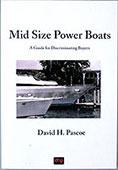






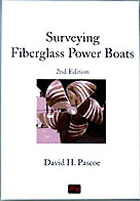
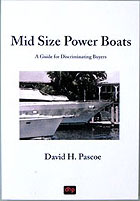
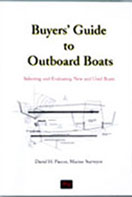

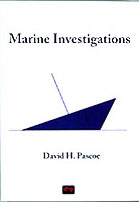
David Pascoe is a second generation marine surveyor in his family who began his surveying career at age 16 as an apprentice in 1965 as the era of wooden boats was drawing to a close.
Certified by the National Association of Marine Surveyors in 1972, he has conducted over 5,000 pre purchase surveys in addition to having conducted hundreds of boating accident investigations, including fires, sinkings, hull failures and machinery failure analysis.
Over forty years of knowledge and experience are brought to bear in following books. David Pascoe is the author of:
In addition to readers in the United States, boaters and boat industry professionals worldwide from nearly 80 countries have purchased David Pascoe's books, since introduction of his first book in 2001.
In 2012, David Pascoe has retired from marine surveying business at age 65.
On November 23rd, 2018, David Pascoe has passed away at age 71.
Biography - Long version